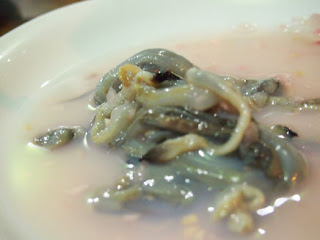 “Saan na pasalubong ko?”, a line sooo familiar among
Filipinos, commonly chanted upon a beloved’s arrival… from another country, city/
province, or the nearby work office- that’s how cliche it is!
“Saan na pasalubong ko?”, a line sooo familiar among
Filipinos, commonly chanted upon a beloved’s arrival… from another country, city/
province, or the nearby work office- that’s how cliche it is!
Giving of pasalubong (a present or token) usually connotes an
act of love and remembrance, as the gift- giver tends to spend more on goods
for loved ones, other than the self. In most case, gifts of this kind come in
edible form- as they say “there is no better way to express love but through
food”.
In Puerto Princesa- Palawan, the most frequented tourist
site is the Baker’s Hill. Located in the barangay of Sta. Monica, the place
beams with a Disneyland-like aura- a theme park filled with Disney characters
sculpted from fiberglass… Don’t get overly excited with the sceneries, as you
might forget the more important reason for the visit- Pasalubong! Allocate
ample time for purchases, as Baker’s Hill bakery offers the best sweet treats!
Hopia (Ube) with pork oil- P45
- Light and Flaky crust
- Melt- in- your mouth Ube filling! - tastes like the renowned Ube Halaya
Cashew Brittle
- High quality cashew made crisp with sugar and corn syrup
- Far- better than the common peanut brittle!
Pianono- P45
- Miniature chiffon cake with custard cream filling, rolled in white sugar
- Light- textured and incredible moist
Baker's Hill
Mitra Road, Barangay Sta. Monica, Puerto Princesa, Palawan
Mitra Road, Barangay Sta. Monica, Puerto Princesa, Palawan
Foodnotes:
> Pianono- originated from the Spanish Swiss roll cake called “Pio nono” (which means “pious nine”), made in honor of Pope Pius IX
> Hopia- a popular bean- filled pastry originally introduced by Fujianese immigrants in the urban centers of the
written by: Atchi






